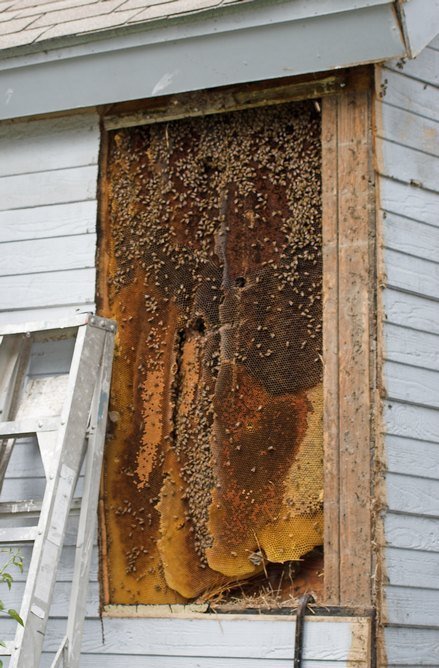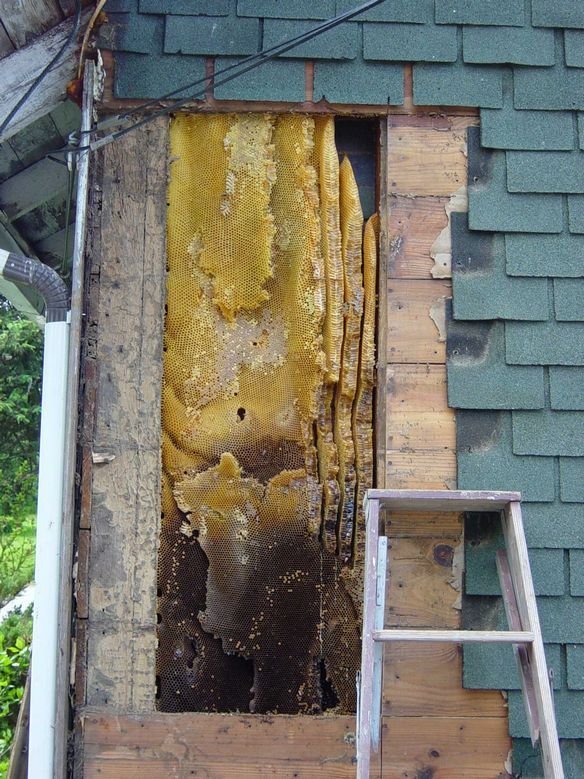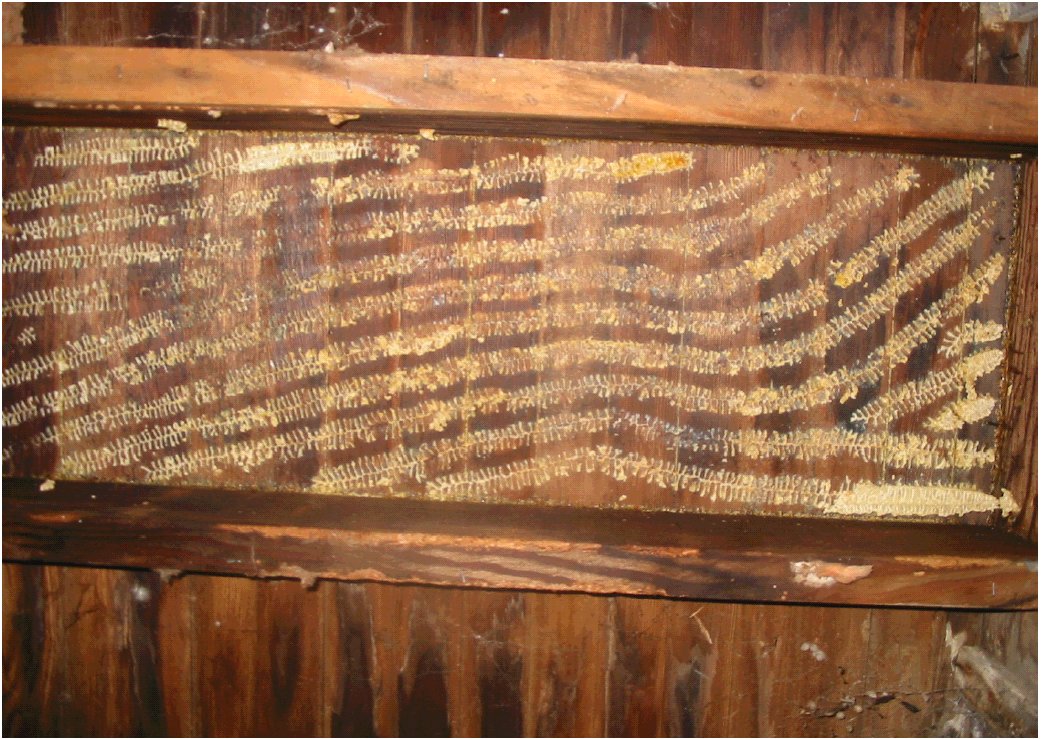
Relatively Natural Comb
The photos on this page illustrate the variability of comb spacing in relatively natural nests.
Dennis Murrell (USA) describes nest structure in a horizontal top-bar hive and reports among other things the tendency for comb to be wider spaced in the honey area (See 'Honey Storage Area' at http://beenatural.wordpress.com/observations/nest/).
Scot McPherson (USA), who used to run 500 horizontal top-bar hives reports that the comb attachment becomes increasingly crescent-shaped as the transition is made from the brood area near the entrance end to the honey area further away from the entrance. This is caused by the honey storage ends of the combs having increased spacing towards the periphery. The result is that the curved combs can cross several top bars unless the combs are carefully managed.
Feral or wild colonies
Below: Comb traces from a colony removed from under floorboards. Deviations from near parallel occur at the nest periphery. The entrance side of this colony is to the right. It was behind the entrance steps of a house built on short pillars and open underneath the floor. The cavity measured 150 mm deep x 368 mm wide x 600 mm long (circa 33 litres, comb spacing approx. 37.5 mm [assuming cavity size data are correct]). (Photo: George Kervitsky, USA)

If you have photos of comb spacing/traces from ferals we would be interested to compare them.
Colonies in hives with crown boards
Below: Natural comb traces under a crown board (Photo: Michael Bush, USA). Some splaying away from parallelism shows at the edges.
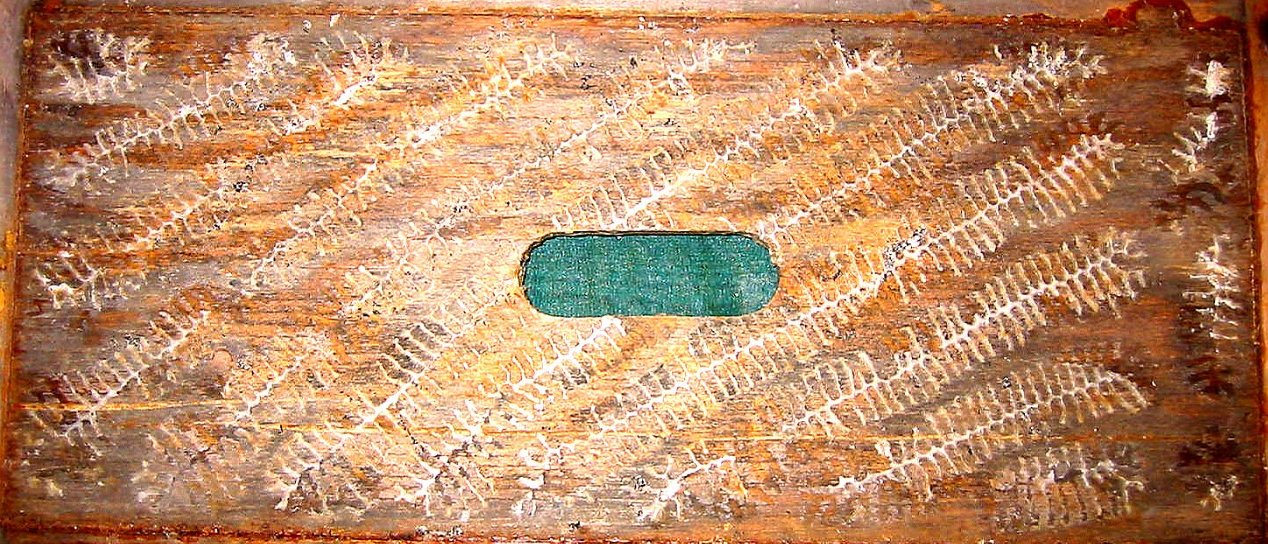
Below: Close-up of above photo (Photo: Michael Bush, USA)
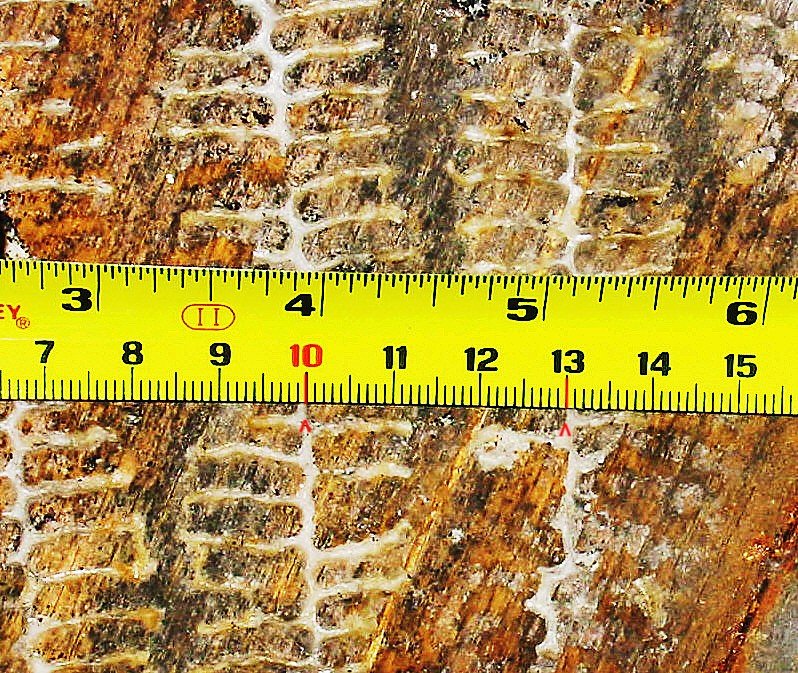
Below: Traces of three combs under hive crown board showing spacing (Photo: Dietrich Vageler, Brazil). These Brazilian, probably Africanised bees, naturally have a relatively close comb spacing.
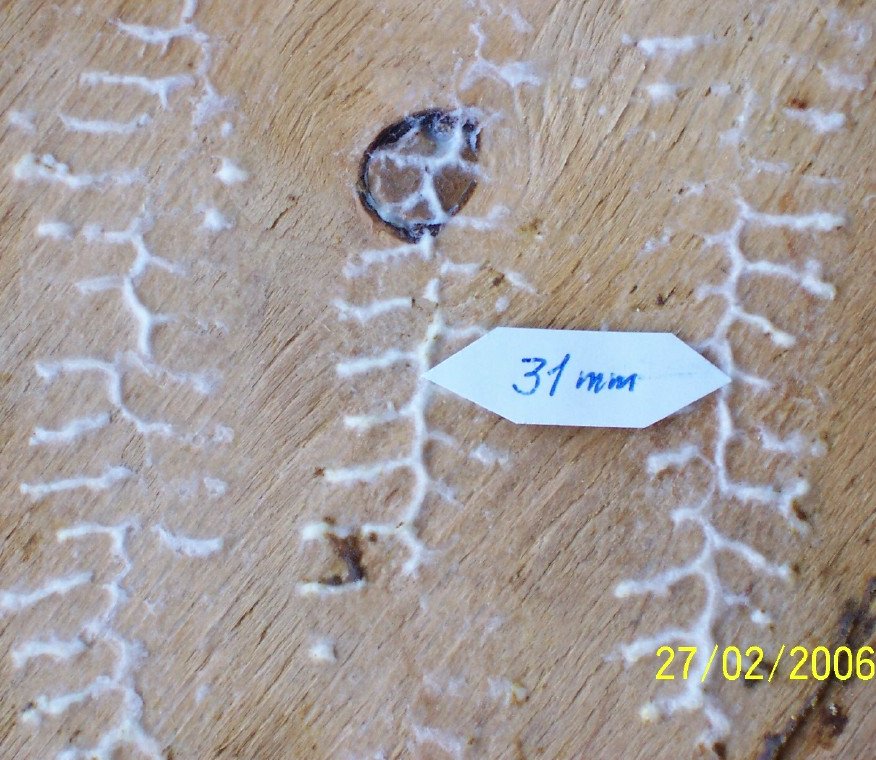
Below: Traces of four combs under hive crown board showing spacing (Photo: Dietrich Vageler, Brazil)
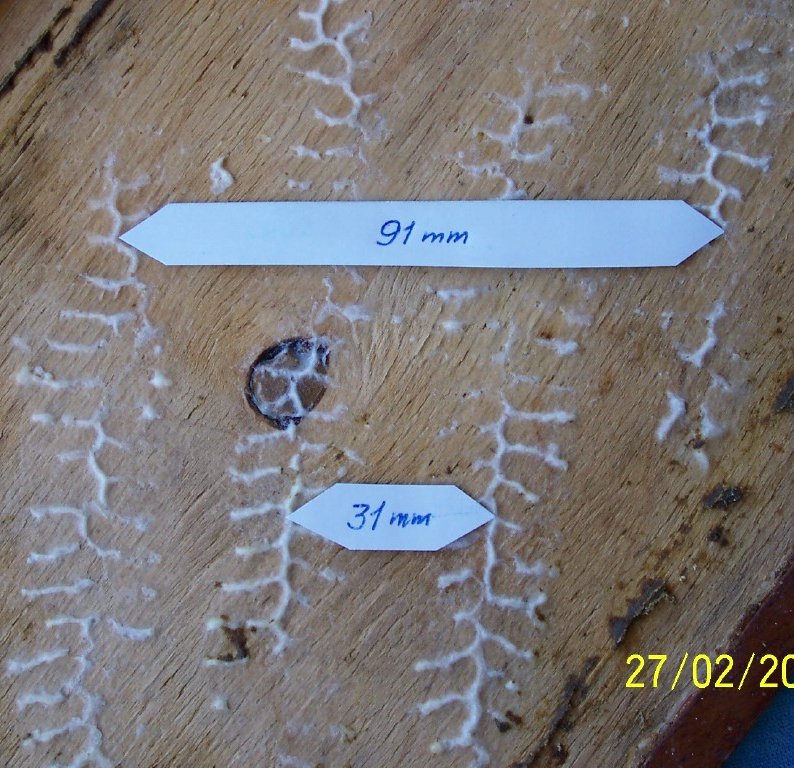
Below: natural comb in willow (Salix) tree from a swarm that appeared to have some difficulty reaching consensus before transferring to a bait hive in the vicinity. The larger comb is about the size of a dinner plate. (Photo: Margie Schwartz)
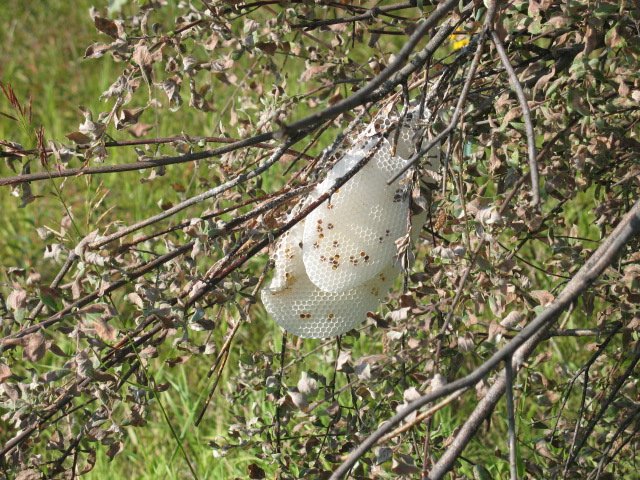
The following two photos are from Shawn Caza . The left shows natural comb on a crown board and the region where the measurement shown on the right was made.
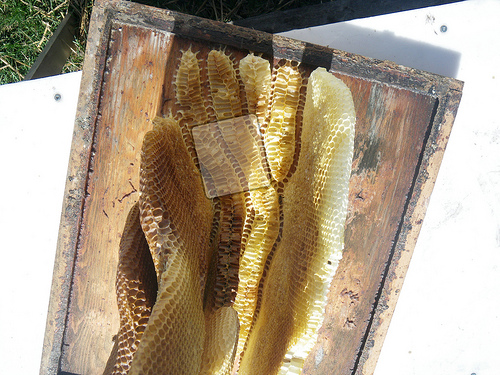
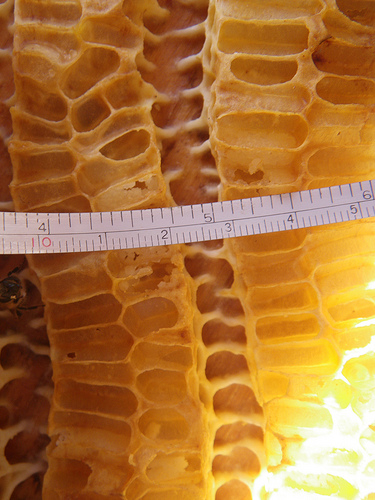
Horizontal top-bar hive colonies
Below: undersides of top-bars from a harvested Kenyan (horizontal) top-bar hive showing the tendency of combs to form crescent shapes and cross to as many as two adjacent bars. The two bars on the left had straight brood combs near the entrance. The two on the right had straight combs storing honey only. The ten in the middle are crescent shaped or don't go full width. The variability of comb spacing in this region is clear. (Photo: Norm Weston, Sweden/Spain)
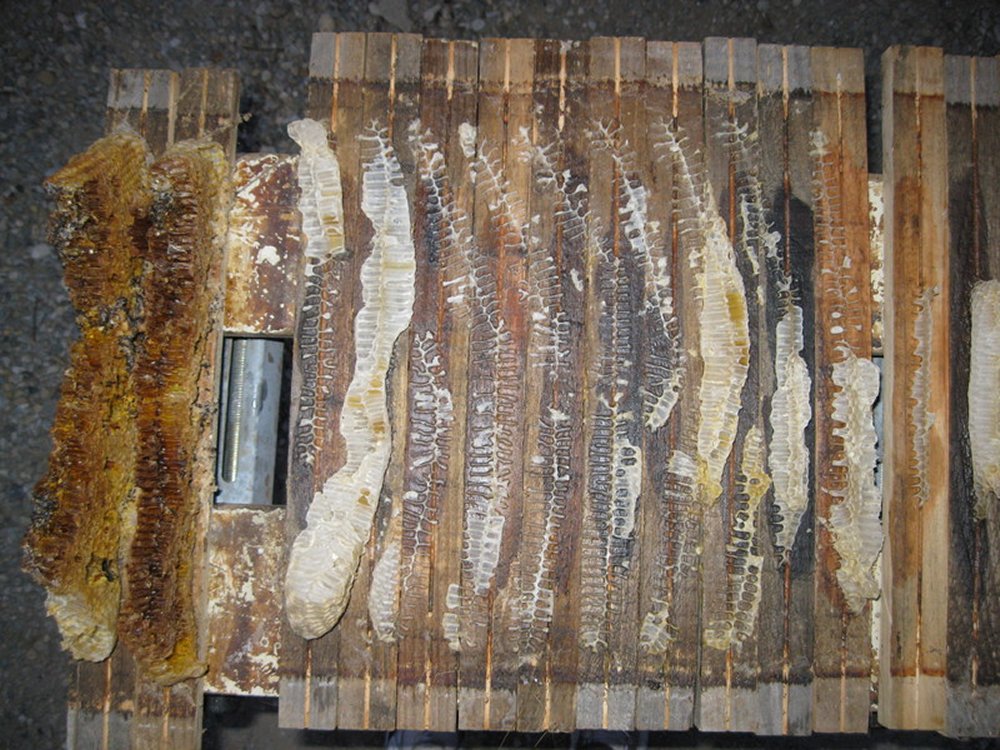
Below: View inside an empty Kenyan (horizontal) top-bar hive illustrating the imprints of combs which show the tendency of combs to form crescent shapes further away from the entrance (top left). There is an area of relatively planar comb near the entrance where the brood was, then an area relatively free of attachments and finally the honey area further down. The splaying effect is visible to a certain extent in the traces of comb in this lower area.
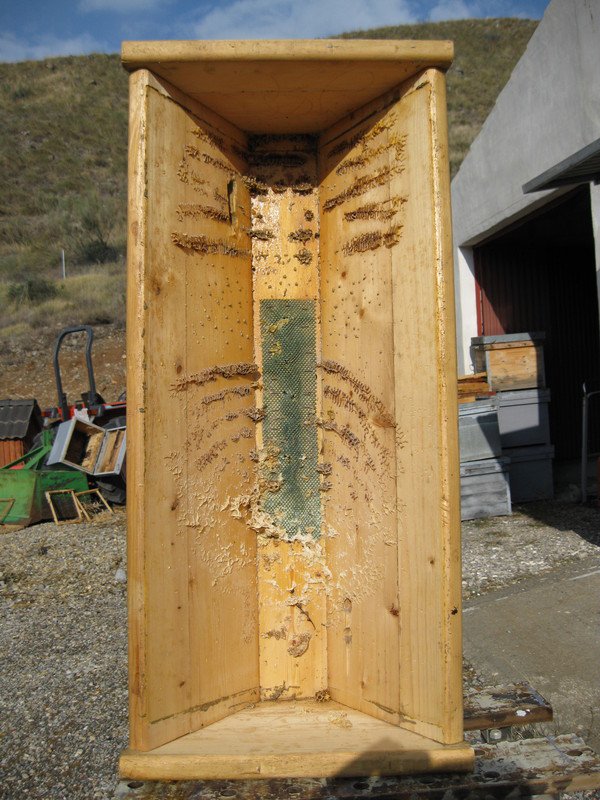
Warré hive colonies
Below: Left: Warré box ready for harvesting -- underside
(entrance side at the bottom). Wider spacing appears to occur away from the entrance in
the honey storage zone.
Right: view through Warré box window. Note only 7 combs in a 300 mm width.
(Photos: John Haverson, UK).
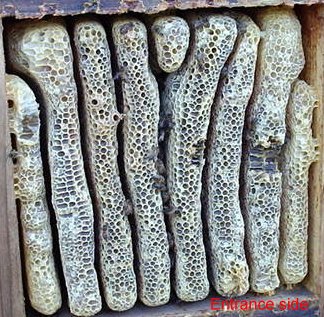
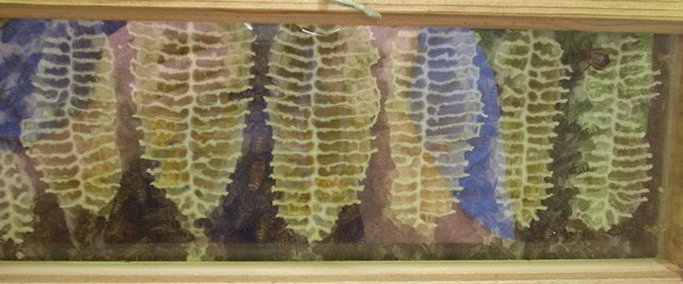
Below: Top box of a two-box hive used for a new swarm. The box
had 8 bars with 36mm between centres. Each bar had a 2.5 mm wide 1mm deep grove saw-cut
down the centre line. A bead of beeswax was run down the grove using the guidebar and
spoon method. Despite the 8 bars and the wax starters this colony produced 6 combs spaced
44 to 50 mm apart. (Photo: John Haverson, UK)
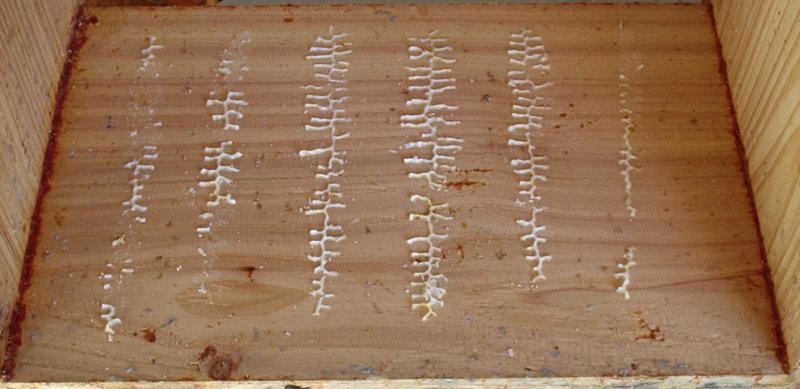
Below: Again 7 combs at the back, i.e. in the honey zone, of a 300 mm wide Warré box. (Photo: Dav Croteau, USA). This harmonises with the 7-comb spacing to the rear of John Haverson's box (see above photo).
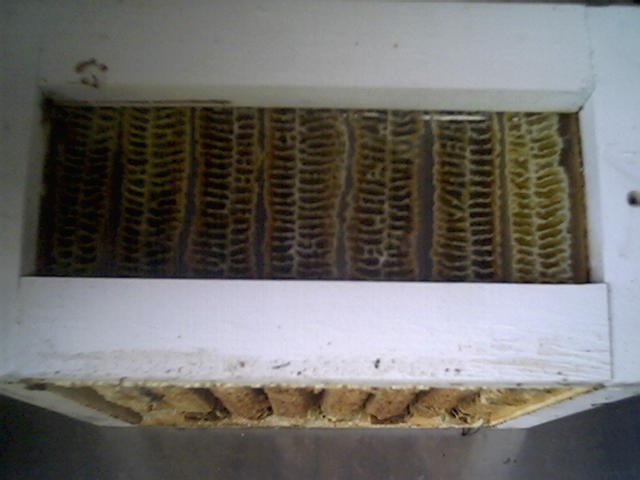
Below: Warré box underside (Photo: Steve Ham, Spain). Again an maximum of 7 combs spaced in a 300 mm width. The spacing deviates a lot from parallel.
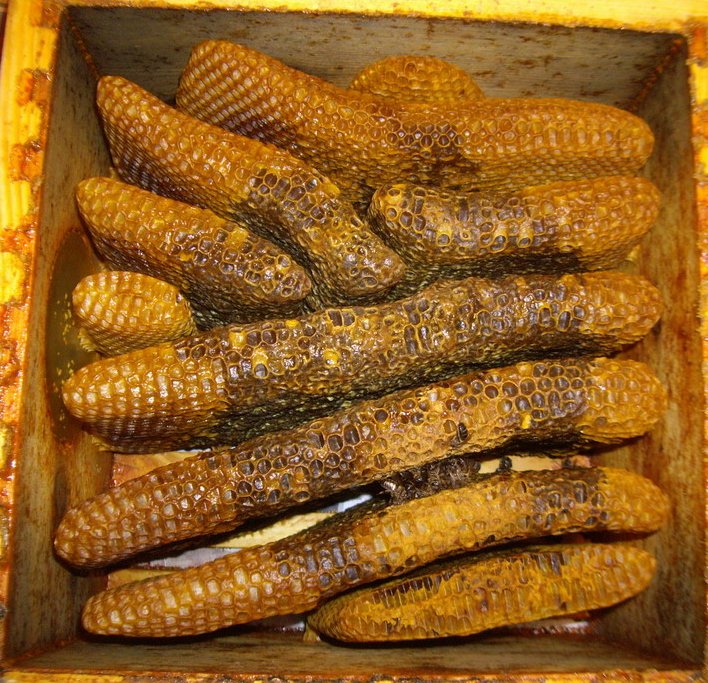
Below left: Warré top box underside Below right: Warré second box with perforated boards instead of top-bars (Photo: Vic Johanson, Alaska). Whereas the left box has relatively parallel comb, the one on the right has a wide deviation from it.
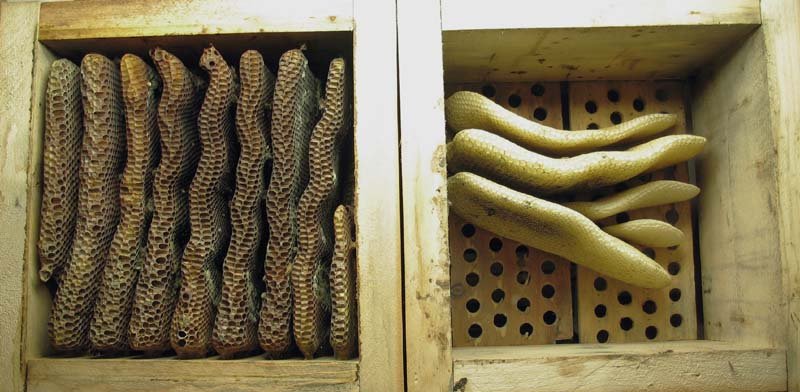
Below: Two views into a partly built up Warré brood box (Photo: Jeff Hartman, USA). This box is similar to the one on the right, above.
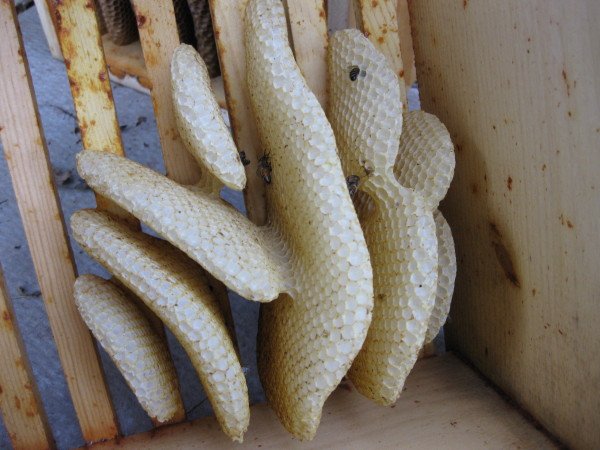
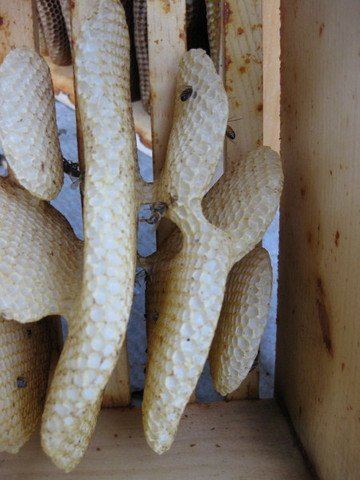
Below: Comb to wall anchorage residues in a Warré box (Photo: Fritz, USA). Not the deviation from even spacing towards the left.
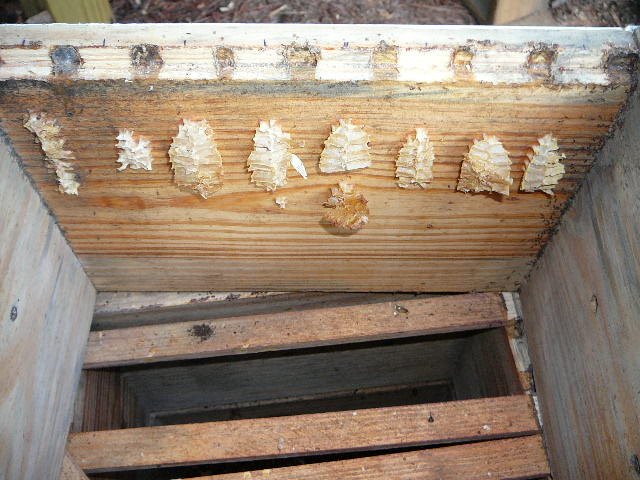
Below: Comb in 5 Warré boxes compared with a skep. The entrance side of one box is marked 'Fluglochseite'. (Photo: Bernhard Heuvel, Germany). Note the relatively parallel comb in the skep, despite, or perhaps because of the round shape.
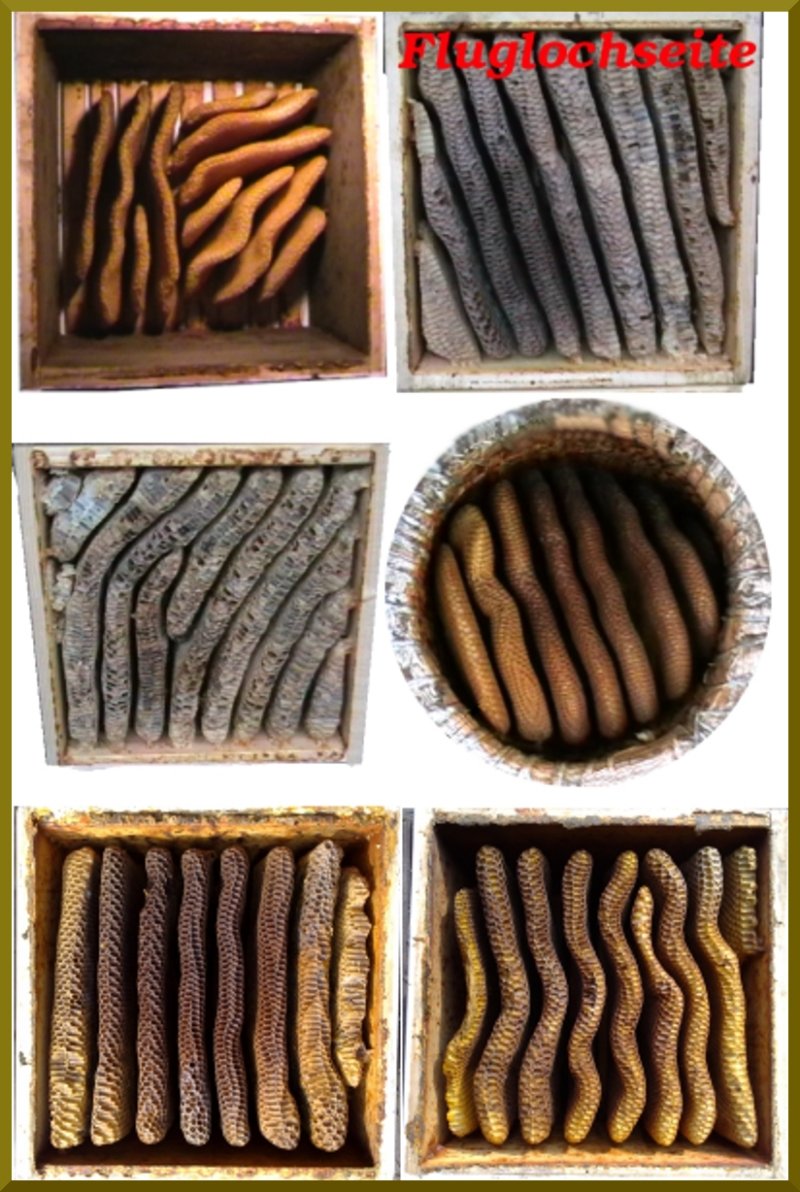
Below: Top of a modified Warré hive with an octagonal internal format (Photo: John Moerschbacher, Canada). John Moerschbacher has noted comb spacings varying from 31 to 34 mm on a crown board (lid) of a box containing only 4 top-bars. Here the internal width between walls of the main box is 270 mm. The walls are nearly 50 mm thick to cope with the extreme winters in the taiga. The crown boards on these hives are 50 mm or 100 mm thick. The thick walls are to give extra insulation in the taiga climate.
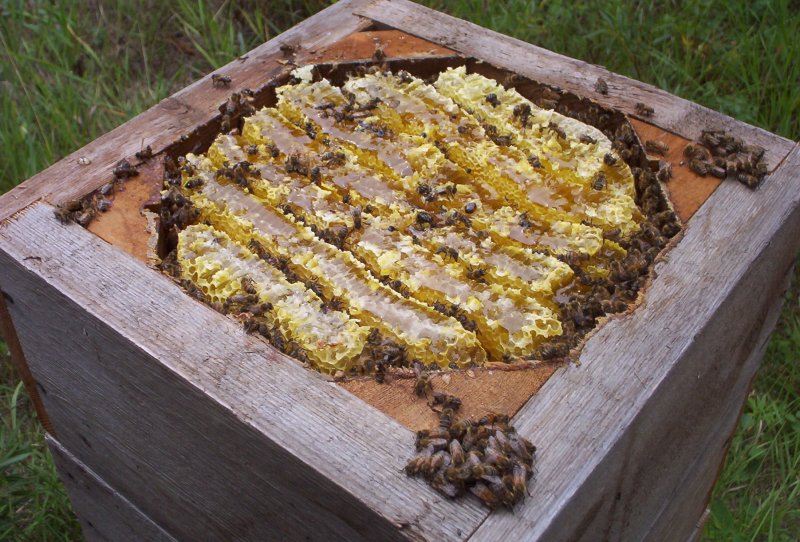
Colonies hanging in a large cavity with no spatial restriction
Below: Natural comb in free hanging colonies at the bee museum Poyales, Southern Avila, Spain.
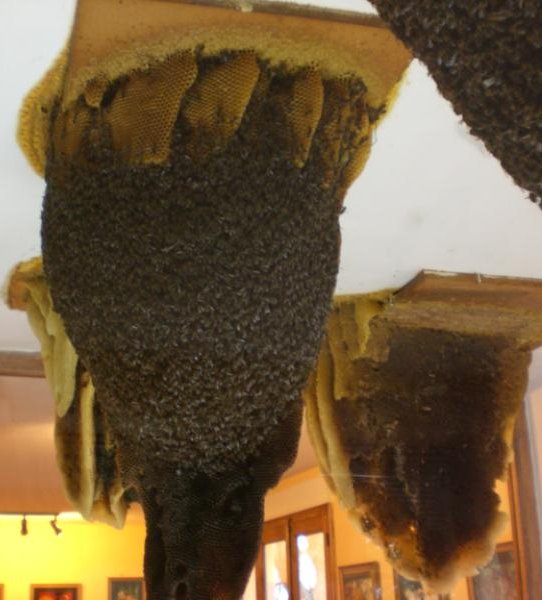
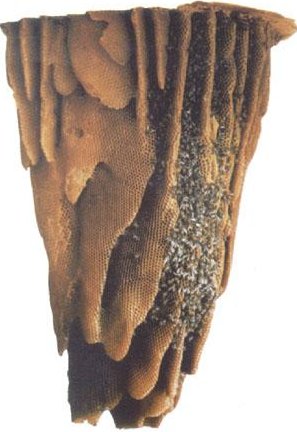
Colonies in cavity walls of timber-framed houses
Below: Two photos kindly supplied by Dennis Murrell (USA), attributed to Joe Waggle
